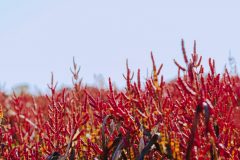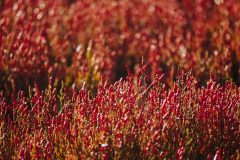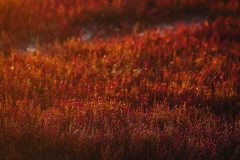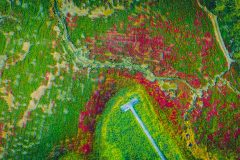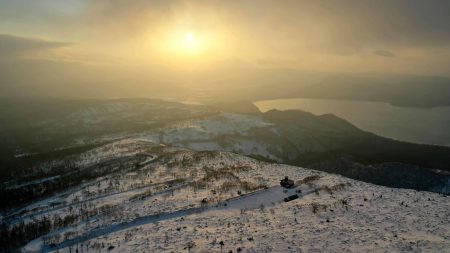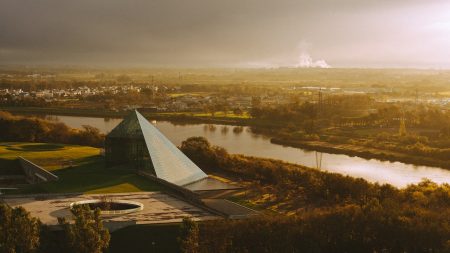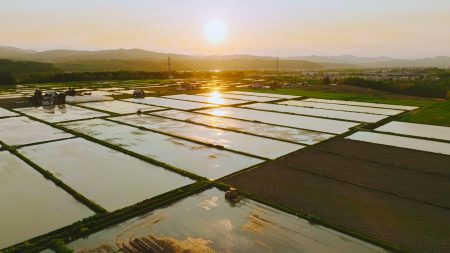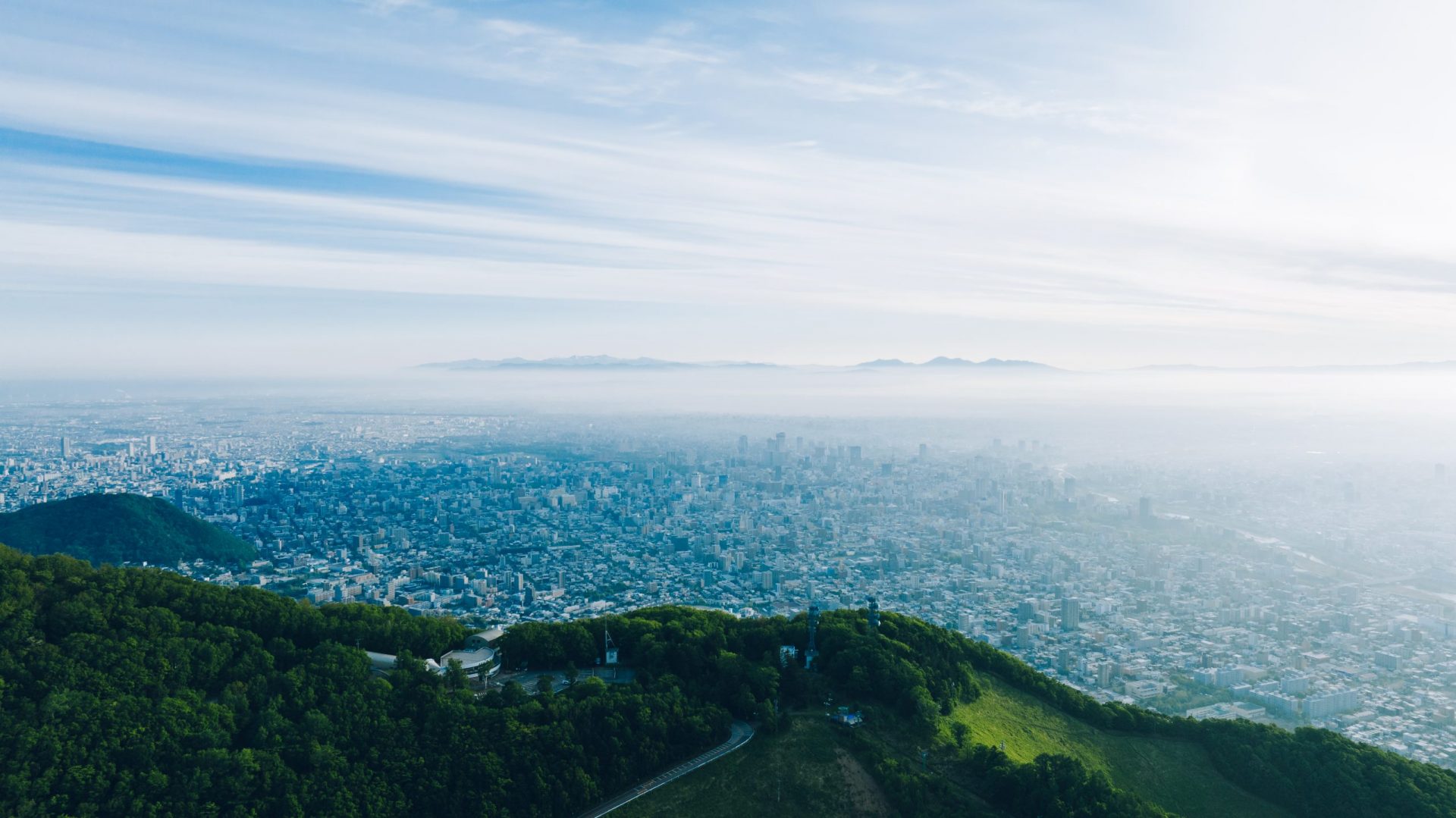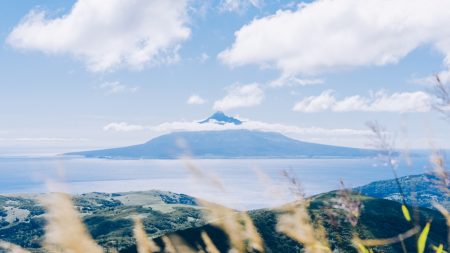

Location
Abashiri, Okhotsk area, Eastern Hokkaido
北海道東部 オホーツク地方 網走
Date taken
10/2022
オホーツクが赤く染まる、サンゴ草群生地
網走国定公園に位置する汽水湖、能取湖の湖畔にはアッケシソウと呼ばれる一年性草本が生育する。例年、秋の訪れと共に赤く変色する姿を指し「サンゴ草」と呼び、周辺の幾つかの場所へ群生地を形成する。
このアッケシソウは塩分を多く含む塩湿地に育つ植物。能取湖以外にもサロマ湖や、藻琴湖といったオホーツク地方周辺の湖や、温根沼、風蓮湖、尾岱沼、厚岸湾などの地域にも分布しているが、網走地域では地元住民による自生地保護が為される等して、植生が守られている。
Okhotsk turns red, coral grass colony
An annual herb called akeshi grass grows along the shores of Lake Nodori, a brackish lake located in Abashiri National Park. It is usually called ‘coral grass’ because of its reddish colouration with the arrival of autumn, and grows in clusters in several places around the lake.
This akeshi grass is a plant that grows in salt marshes with high salt content. In addition to Lake Nodori, it is also found in lakes around the Okhotsk region, such as Lake Saroma and Lake Mokoto, and in areas such as Onneto, Lake Huren, Odaito and Atsukishi-wan, but in the greater Abashiri area the vegetation is protected by local people, who protect the native habitat.


